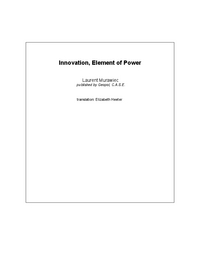
Introduction
According to historian and military analyst Martin van Creveld, military technology and infrastructure, logistics and communications “dictate for the most part the major characteristics of organization, training, strategy, even the concept itself of battle. Without it, one couldn’t conduct an armed conflict, and even the existence of conflict would be inconceivable.”1 The vast amount of land held in the rear of the battle sets narrow limits on what could take place along the front: battles, campaigns, and even war. The modern era, since the beginning of the industrial revolution has seen the front line expand to the detriment of the rear flanks. The path dependency described by van Creveld has grown: one fights wars based on and limited by technology.
The acceleration of technological innovation over the 20th century is such that we could describe this era as an age of innovation. Moreover, the speed of this acceleration is rapidly increasing. The striking progress in electronics, information and telecommunication in the last two decades have contributed to the creation of unprecedented economic upheavals: innovative waves have a multiplier effect.
All innovation necessarily disrupts the status quo ante. This axiom holds as true for military affairs as for economic ones. For example, the introduction of the steam engine and electricity transformed not only industry but also the realm of military affairs. These new technologies did not impact all nations in the same fashion or way. The resulting imbalance soon benefits one [nation] at the expense of another: those gaining from the breakthrough will be able to dominate those who do not. Innovation is an element of power.
First this paper will analyze the innovative nature of the United States as a society before studying the significant waves of economic, technological and social innovations as experienced by this country.
In the second part, the paper looks at the institutional fluidity valued by Americans and how this has played a role in fostering innovation. In this section, the study will also look at U.S. geopolitics.
Thirdly, the study will then observe the connections between civilian and military evolution and how each has influenced the other, particularly in regards to the fragmentation of economic activity and organizational changes.
The paper will question what is meant by the concept, the “revolution in military affairs,” looking closely at promulgators of the concept and at resistance to its acceptance in the fourth section.
The fifth section will sound out the RMA’s impact on doctrines, industry and research and development.
The sixth and final part will attempt to put forth some of these notions as they apply to France and Europe.
A bibliography of documents relevant to the current U.S. debate is provided in the Appendix.



























